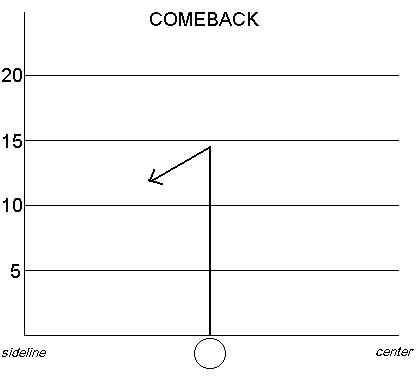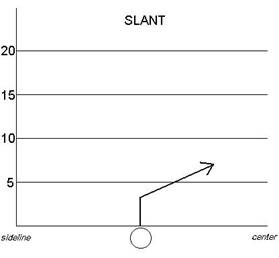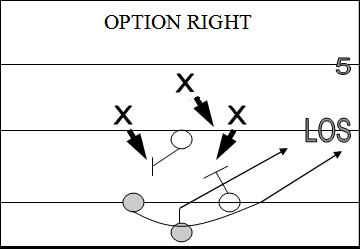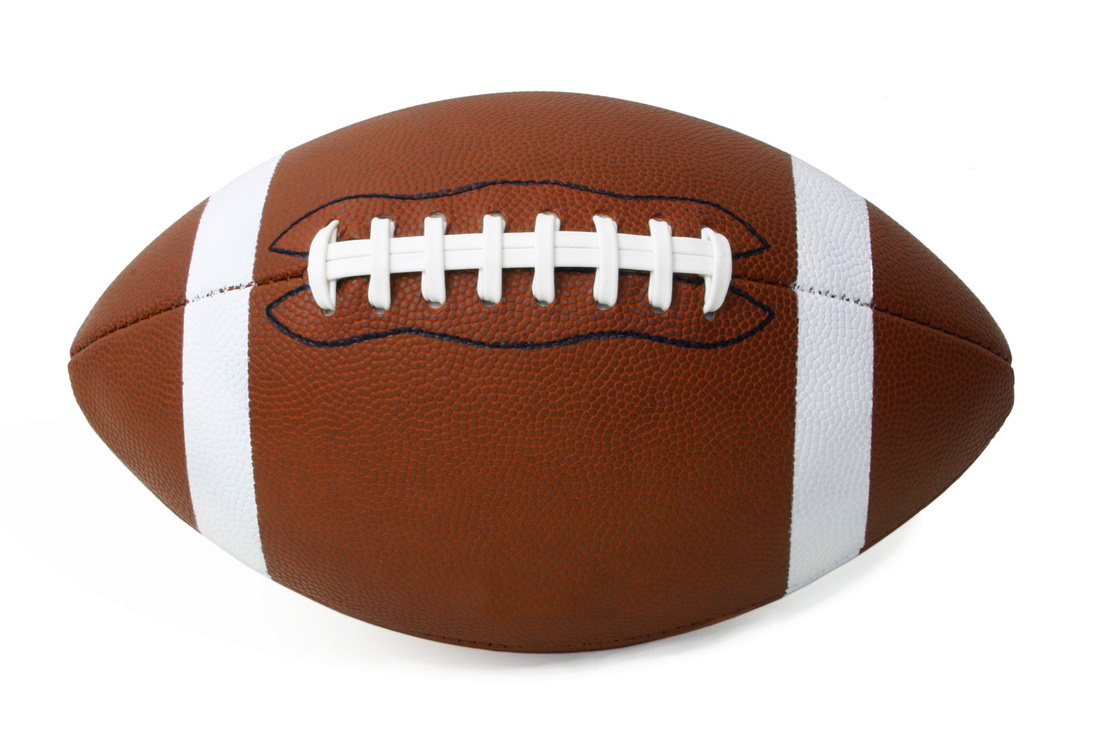I contend that if flag football more closely resembled tackle in the strategic options available, flag football would become a more familiar, more significant, more substantial (and thus more watchable) product.
I’ve played flag football for years now and am deeply engrossed in the strategy, execution, and drama of a good matchup. However, as a player on the field or as a coach on the sidelines, I am keenly aware of information that other spectators do not have – play calls, skill sets of players, or even the personalities on the field that can influence my appreciation for and enjoyment (or lack thereof) of the game. So, here is my controversial statement of the week…
“I think flag football could make an excellent spectator sport, but not in its current form.”
The only time I’ve seen flag football broadcast as a spectator sport was at the NFL Pro Bowl. I don’t know if they still do this but years ago the NFL would cart out old-time greats and ask them to play exhibition flag football (4-on-4, I think), then chop it up into a 30-minute TV package. I recall seeing Marcus Allen, Joe Montana, and many other notable personalities play flag football on TV. It was thrilling, but mainly because of the personalities involved. I might have been just as interested if these same NFL players were Curling. Outside of the nostalgia of watching the old guys work their magic again, it was a boring, wide-open game of no defense, everybody get open, and very little strategy.
Without an identifiable strategy, flag football can seem like a predictable Ping-Pong of “which set of athletes can juke and jive better after getting the football.” Nothing is more snooze-inducing that watching the same bubble screen or 2-yard Drag route to the super-athlete who breaks one open on the “Washington Generals” of football. And I’m sure we’ve all experienced how pure athleticism can eclipse and dominate even an excellent strategy, which, to me, signals a game out of balance, a game lacking drama, a game fun to play (for the athletes) but dull to watch.
Remember, “real” football means teamwork, strategy, execution, imposing your will on the other team, physical and mental exhaustion, fighting for yards and claiming victory as a team. Because so many of us are knowledgeable fans of tackle football (thanks TV!), we can recognize what the coach and players are doing (what plays are being called, if the execution and clock management is good or bad, etc.) and compare this to what WE might do. This psychological interaction with the game is a crucial piece of engaging an audience or being an engaged spectator. But flag football in its current form is too dissimilar from tackle football to be a satisfying substitute. If tackle football is orange juice, flag football is Tang. Tackle is sugar, flag is saccharine. Why? Because strategies that work in flag typically won’t work in tackle, and vice versa.
My fundamental assertion: Flag football is so misaligned and tactically incongruent with tackle football that the spectators cannot enjoyably follow the game. I contend that if flag football more closely resembled tackle in the strategic options available, flag football would become a more familiar, more significant, more substantial (and thus more watchable) product.
But I’m not complaining – I’m offering a solution.
With two basic rule changes, creating dedicated Offensive Lines and allowing low-impact screen blocking for running plays, flag football can become “Low-Impact Football,” something safer than tackle but just as satisfying. Let’s take each rule change separately:
RULE CHANGE #1 - DEDICATED OFFENSIVE LINEMEN
As leagues get larger (7-on-7 or 8-on-8, for example) you run into the problem of too many moving parts on the field. Be honest, how many times have you tried to run a real offense and watched it unravel into “just get open” after 10 minutes? I coached in 6-on-6 leagues, which I felt was just large enough to keep track of all the eligible receivers. Anything bigger and you ended up focusing on one or two routes, with everyone else being decoys or debris to obscure from where the QB wanted the pass to go.
In tackle football, you have 11 Offensive players. Of these you have an even split, five Offensive Linemen and five “skill position” players (WR, RB, TE) plus one Quarterback. The reason 6-on-6 seemed to work was that there were only five (5) eligible receivers, the same as in tackle football. Anything larger felt less like football and more like Ultimate Frisbee.
My rule change proposes to maintain this 50/50 split between OL and “skill” players in flag football.
For example, 7-on-7 football would now consist of three OLs (ineligible receivers) and three skill players (3 WRs, or 2 WRs and 1 RB, or even 2 RBs and one WR). Now you’ve got seven (7) defenders to cover three (3) eligible receivers. The defense has a whole new set of strategic options for covering the pass. You can play a real zone now and sacrifice pressure on the QB, if you so choose. You can blitz the QB and send most of your defenders to beat their pass protection. Either of these is effectively suicide in traditional flag football, where you typically play straight Man Coverage and send as many rushers as the Offense leaves in the backfield. Strategically, this is very boring, and usually it’s only a matter of time before the Offense finds the one or two weak match-ups that kill the defense.
Of course, Offenses will see how tough it is to complete passes if every receiver is double covered. In tackle football, you have to run to set up the pass. But sustainable running in traditional flag football is far too difficult to rely on. How can you accomplish a balanced running game inside the OLs?
RULE CHANGE #2 - "SNAG" BLOCKING FOR RUNNING PLAYS
A solid running game is a big advantage for spectators. With only passing, the game of flag football is too one-dimensional and cannot support a season’s worth of drama. A “real” running game provides a new mode of attack, an extra layer of complexity for defenses, a new set of athletic challenges for the players, and a variety of new offensive plays that can be executed for an expanding audience.
The challenge lies in how to model tackle football’s blocking schemes without introducing full-contact blocking. I’m actively working on drafts of this particular rule change, trying to make it reasonable and enforceable.
The basic rules of "SNAG" blocking:
The consequences of contact between players are as follows:
By adopting these rules, offensive line becomes a position of great power. The offensive lineman is an obstacle to be circumnavigated, not overpowered. Now a Guard can pull across the formation, accelerate downfield, and pull the flags of a Safety, thus "blocking" him from his ball-carrier. Now, if a defense chooses to drop seven players into coverage to defend the pass, a smart team can run the ball up the middle with three linemen and a half back and get five yards or more. In this way the game provides enough strategy to achieve balance, the same way it is in tackle football. Yes, you can blitz all your players in either flag or tackle, but you’ll pay a price.
“I think flag football could make an excellent spectator sport, but not in its current form.”
The only time I’ve seen flag football broadcast as a spectator sport was at the NFL Pro Bowl. I don’t know if they still do this but years ago the NFL would cart out old-time greats and ask them to play exhibition flag football (4-on-4, I think), then chop it up into a 30-minute TV package. I recall seeing Marcus Allen, Joe Montana, and many other notable personalities play flag football on TV. It was thrilling, but mainly because of the personalities involved. I might have been just as interested if these same NFL players were Curling. Outside of the nostalgia of watching the old guys work their magic again, it was a boring, wide-open game of no defense, everybody get open, and very little strategy.
Without an identifiable strategy, flag football can seem like a predictable Ping-Pong of “which set of athletes can juke and jive better after getting the football.” Nothing is more snooze-inducing that watching the same bubble screen or 2-yard Drag route to the super-athlete who breaks one open on the “Washington Generals” of football. And I’m sure we’ve all experienced how pure athleticism can eclipse and dominate even an excellent strategy, which, to me, signals a game out of balance, a game lacking drama, a game fun to play (for the athletes) but dull to watch.
Remember, “real” football means teamwork, strategy, execution, imposing your will on the other team, physical and mental exhaustion, fighting for yards and claiming victory as a team. Because so many of us are knowledgeable fans of tackle football (thanks TV!), we can recognize what the coach and players are doing (what plays are being called, if the execution and clock management is good or bad, etc.) and compare this to what WE might do. This psychological interaction with the game is a crucial piece of engaging an audience or being an engaged spectator. But flag football in its current form is too dissimilar from tackle football to be a satisfying substitute. If tackle football is orange juice, flag football is Tang. Tackle is sugar, flag is saccharine. Why? Because strategies that work in flag typically won’t work in tackle, and vice versa.
My fundamental assertion: Flag football is so misaligned and tactically incongruent with tackle football that the spectators cannot enjoyably follow the game. I contend that if flag football more closely resembled tackle in the strategic options available, flag football would become a more familiar, more significant, more substantial (and thus more watchable) product.
But I’m not complaining – I’m offering a solution.
With two basic rule changes, creating dedicated Offensive Lines and allowing low-impact screen blocking for running plays, flag football can become “Low-Impact Football,” something safer than tackle but just as satisfying. Let’s take each rule change separately:
RULE CHANGE #1 - DEDICATED OFFENSIVE LINEMEN
As leagues get larger (7-on-7 or 8-on-8, for example) you run into the problem of too many moving parts on the field. Be honest, how many times have you tried to run a real offense and watched it unravel into “just get open” after 10 minutes? I coached in 6-on-6 leagues, which I felt was just large enough to keep track of all the eligible receivers. Anything bigger and you ended up focusing on one or two routes, with everyone else being decoys or debris to obscure from where the QB wanted the pass to go.
In tackle football, you have 11 Offensive players. Of these you have an even split, five Offensive Linemen and five “skill position” players (WR, RB, TE) plus one Quarterback. The reason 6-on-6 seemed to work was that there were only five (5) eligible receivers, the same as in tackle football. Anything larger felt less like football and more like Ultimate Frisbee.
My rule change proposes to maintain this 50/50 split between OL and “skill” players in flag football.
For example, 7-on-7 football would now consist of three OLs (ineligible receivers) and three skill players (3 WRs, or 2 WRs and 1 RB, or even 2 RBs and one WR). Now you’ve got seven (7) defenders to cover three (3) eligible receivers. The defense has a whole new set of strategic options for covering the pass. You can play a real zone now and sacrifice pressure on the QB, if you so choose. You can blitz the QB and send most of your defenders to beat their pass protection. Either of these is effectively suicide in traditional flag football, where you typically play straight Man Coverage and send as many rushers as the Offense leaves in the backfield. Strategically, this is very boring, and usually it’s only a matter of time before the Offense finds the one or two weak match-ups that kill the defense.
Of course, Offenses will see how tough it is to complete passes if every receiver is double covered. In tackle football, you have to run to set up the pass. But sustainable running in traditional flag football is far too difficult to rely on. How can you accomplish a balanced running game inside the OLs?
RULE CHANGE #2 - "SNAG" BLOCKING FOR RUNNING PLAYS
A solid running game is a big advantage for spectators. With only passing, the game of flag football is too one-dimensional and cannot support a season’s worth of drama. A “real” running game provides a new mode of attack, an extra layer of complexity for defenses, a new set of athletic challenges for the players, and a variety of new offensive plays that can be executed for an expanding audience.
The challenge lies in how to model tackle football’s blocking schemes without introducing full-contact blocking. I’m actively working on drafts of this particular rule change, trying to make it reasonable and enforceable.
The basic rules of "SNAG" blocking:
- Offensive Lineman can act as a blocker in an attempt to screen a defender from a ball-carrier.
- On pass plays, Offensive Linemen cannot cross the line of scrimmage until after the ball is passed forward. Note: for Screen plays, the forward pass would be executed behind the line of scrimmage and behind the blockers
- Once on the move, blockers must keep their hands and arms either at their side or behind their back. Any use of the hands in the process of blocking is considered “initiating contact” and will be penalized.
- Offensive linemen are not eligible receivers and, as such, do not wear flag belts.
- Offensive Linemen can pull any defender's flags to "SNAG" the block. As a result, both the blocker and defender are out of the play for the duration of the down, and must stand still in the spot of the "SNAG." Any attempt by either player to influence the outcome of the play after the "SNAG" is a penalty.
The consequences of contact between players are as follows:
- Anyone who initiates contact is penalized. “Initiate” means using shoulder or elbow as weapon, accelerating through a blocker or defender, using leg whips, kneeing a runner, or any use of the hands against another player
- Flagrant or intentional fouls are first-time ejection offenses and are not tolerated. Flagrant fouls in the final drive of a game can garner additional loss of playing time in subsequent games.
- “Incidental contact” is the anticipated bumping that typically occurs between defenders and receivers or blockers and rushers. Provided neither player “initiates” the contact, the contact is minor in nature, and the contact does not directly alter the result of the play, the referee is encouraged to allow incidental contact.
By adopting these rules, offensive line becomes a position of great power. The offensive lineman is an obstacle to be circumnavigated, not overpowered. Now a Guard can pull across the formation, accelerate downfield, and pull the flags of a Safety, thus "blocking" him from his ball-carrier. Now, if a defense chooses to drop seven players into coverage to defend the pass, a smart team can run the ball up the middle with three linemen and a half back and get five yards or more. In this way the game provides enough strategy to achieve balance, the same way it is in tackle football. Yes, you can blitz all your players in either flag or tackle, but you’ll pay a price.
Be honest, how many times have you tried to run a real offense and watched it unravel into “just get open” after 10 minutes?
The point of all of this is to create a sport that closely resembles tackle football so that we can get kids away from Pop Warner and Pee-Wee leagues where full contact is an expectation. The brain injuries and long term damage that can be caused by full-contact tackle football are unacceptable risks to the health of our children. With a few rule tweaks, you can have something enjoyable: Low-Impact Football, a game that carries on the essential cultural importance that Americans identify with tackle football, a game that millions can recognize and appreciate as an evolution of football over the past 100 years, a game that prevents unnecessary head trauma by removing full-contact blocking and tackling.
Let us know what you think! Comment on this post or join the conversation on Facebook at Winning Flag Football's page.
Let us know what you think! Comment on this post or join the conversation on Facebook at Winning Flag Football's page.





 RSS Feed
RSS Feed